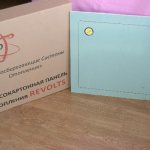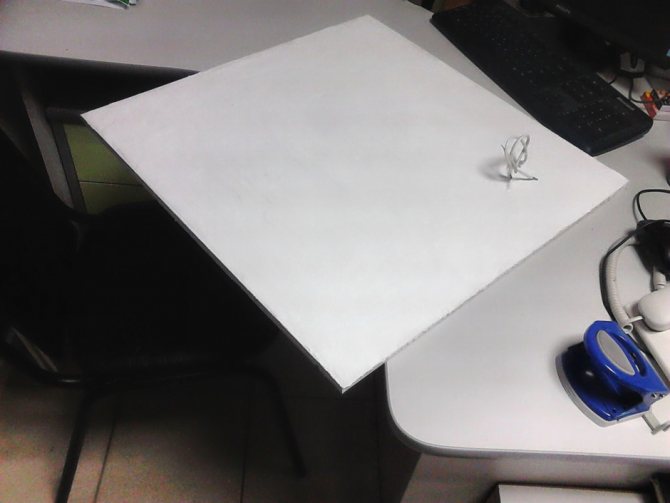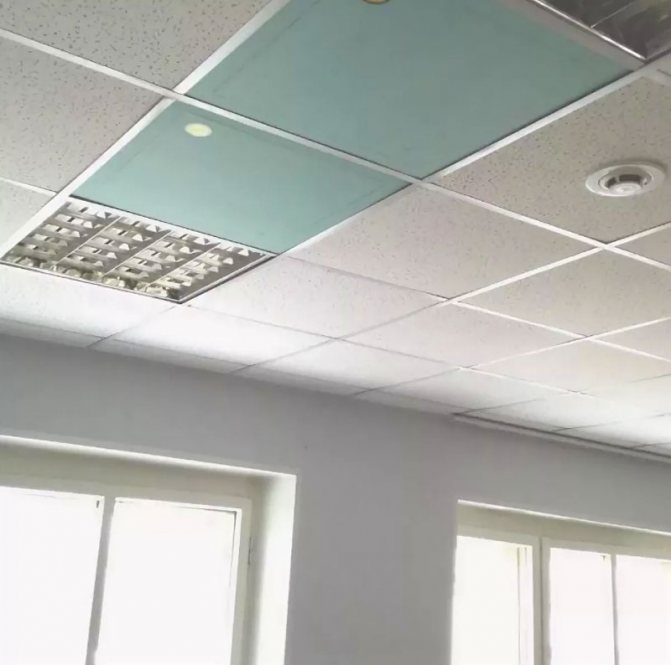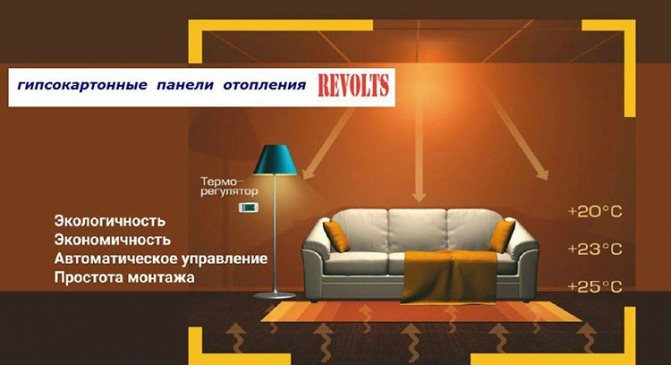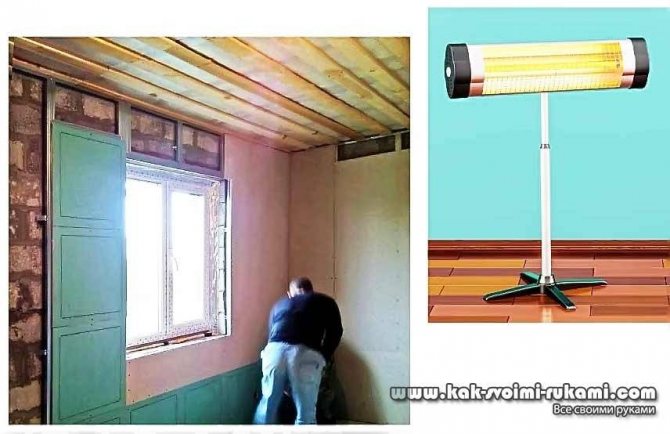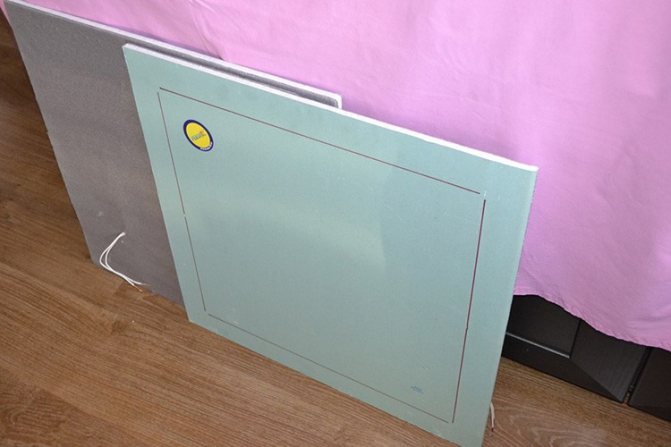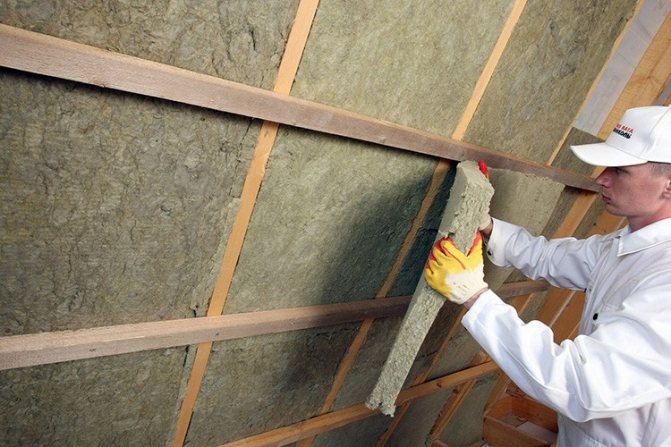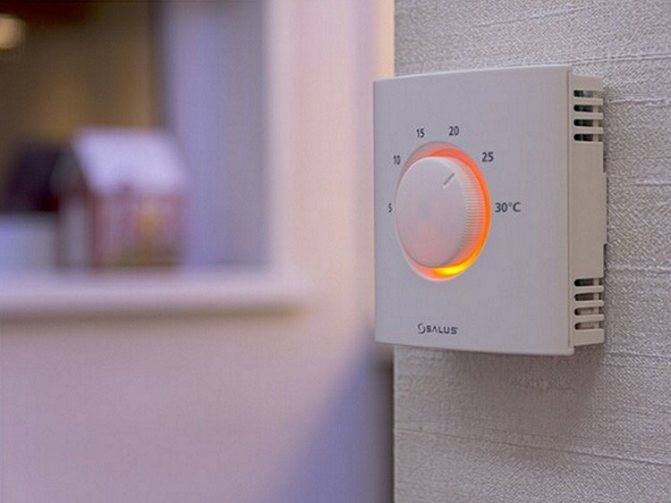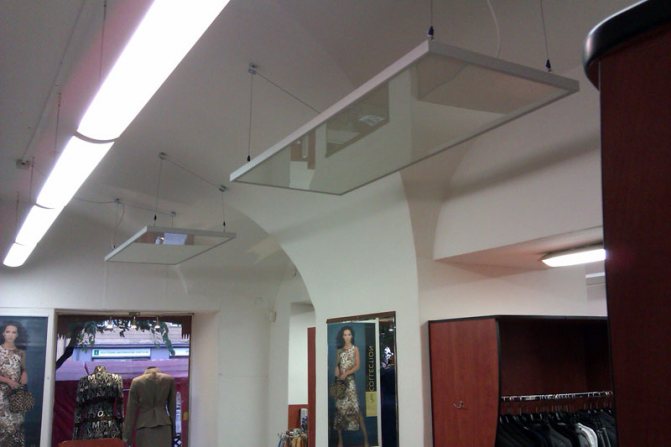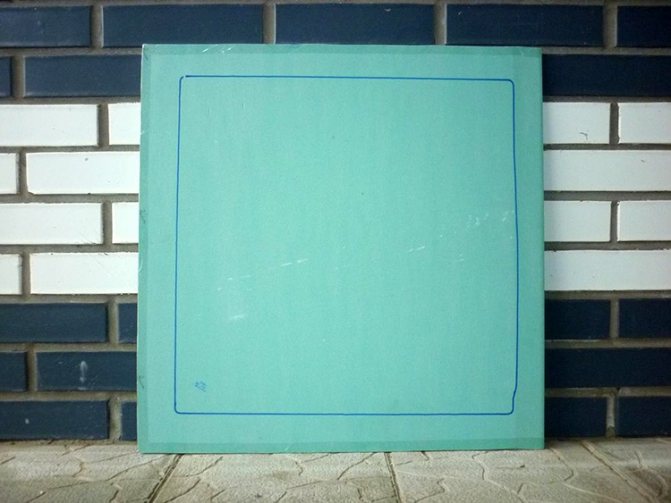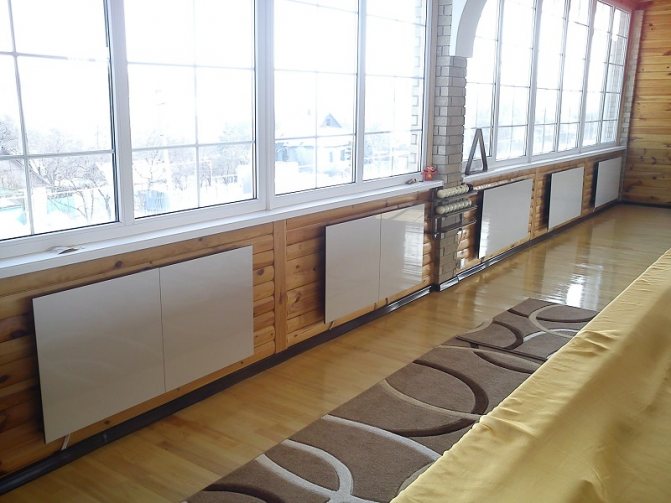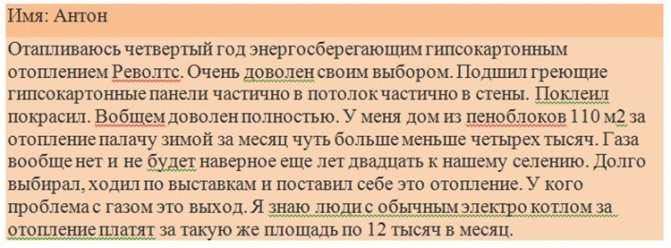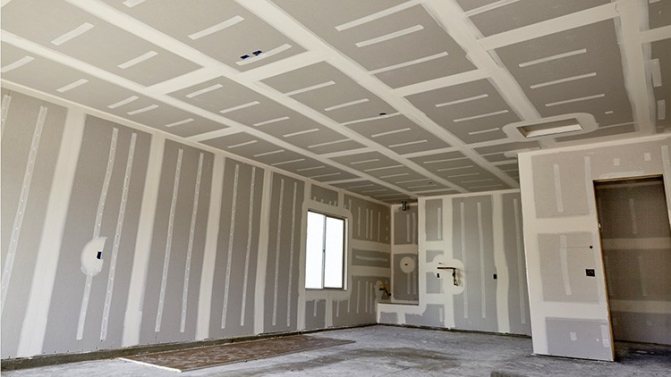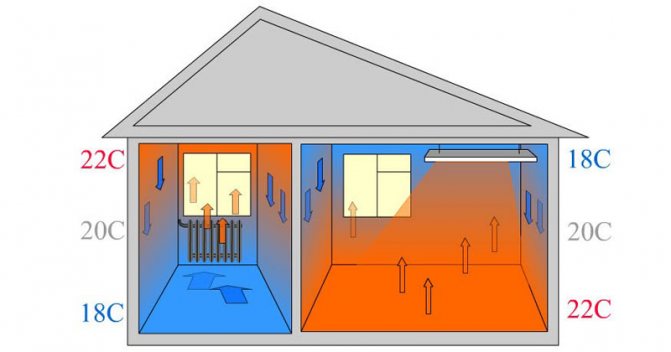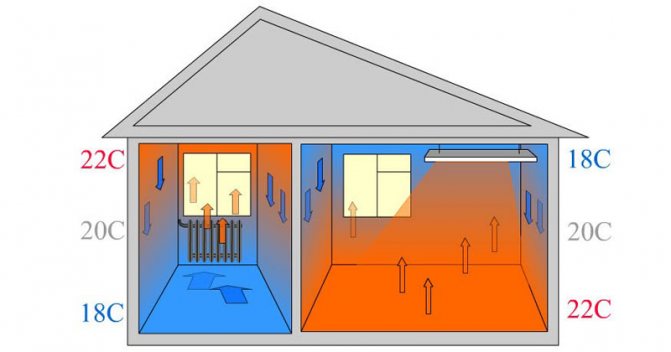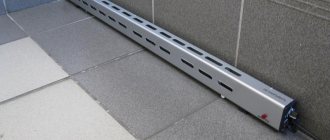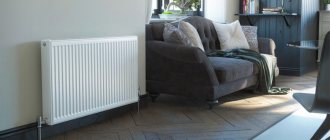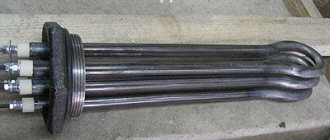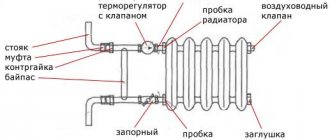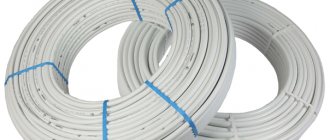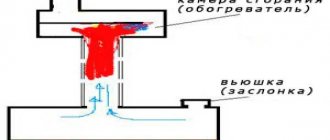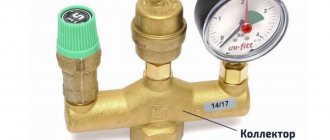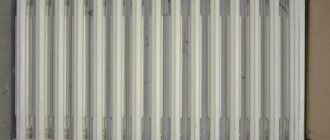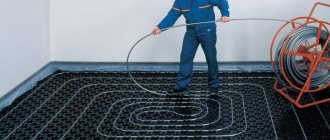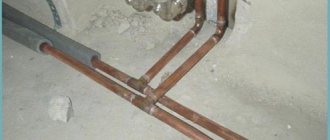One of the most costly items for maintaining a house or apartment is considered to be the cost of heating in the autumn-winter period. Every year, new heating technologies appear - from heat pumps, ultra-efficient electric boilers to double-layer film underfloor heating and more. One of the latest interesting developments in the field of heating technologies was the appearance of Revolts drywall panels, which a large number of experts call one of the most effective and safe for the home.
The device of the novelty, which is the Revolts
In appearance, Revolts panels are very similar to ordinary square plasterboard with a suspension and a smooth face. From such sheets or single heating elements of Revolts gypsum plasterboard heating, it is possible to collect a whole wall, tiling the ceiling or install single heaters in the coldest rooms of the building.
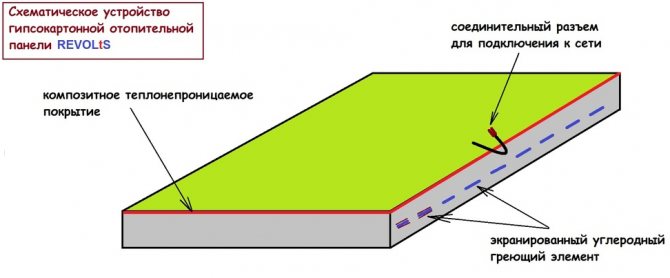
According to manufacturers, the heating system is based on the well-known PLES technology - heating using thin graphite films on a polymer film.
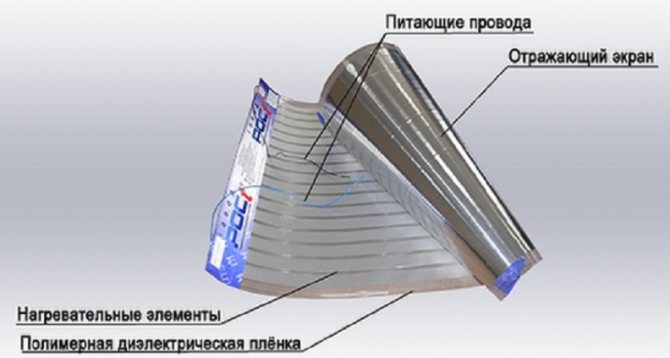

Structurally, Revolts gypsum plasterboard panel consists of the following elements:
- Heating composite sheet based on metal-graphite film tracks;
- Gypsum matrix with a heating film inside;
- Heat insulating substrate applied to the back side of the revolts panel;
- Electric wiring and suspension system built into the heating sandwich.
Important! Revolts heating panels do not require special conditions or fire protection elements, since in working order the temperature of the gypsum plasterboard surface rarely exceeds 90 ° C.
A fairly simple and lightweight design that has no moving parts, hydraulic and air circuits, open heating coils or other elements that consume oxygen in the air or reduce the humidity in the room.
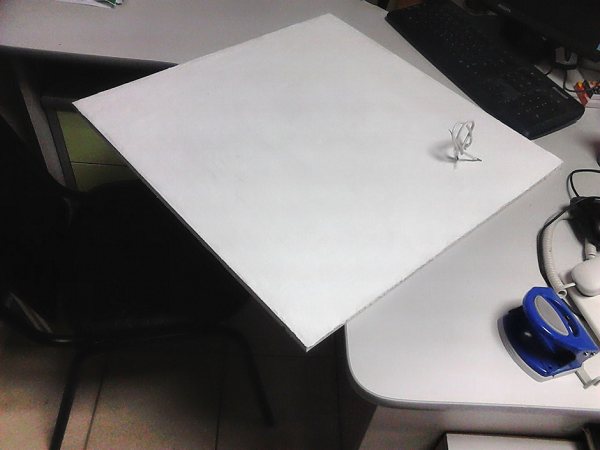

For apartments and country houses
Infrared heating panels "REVOLTS" will be a reliable source of additional heat in apartments with central heating, where it is planned to finish walls or ceilings with plasterboard. The system will help to keep warm during the off-season and will eliminate the need to constantly move from place to place electric floor heaters. When using panels as an additional source of heating, it is enough to install several panels with a total capacity of 50% of the calculated one for the room.
Installation of infrared panels "REVOLTS" in country houses with plasterboard walls, allows you to get an economical and safe main heating system. In houses heated with solid and liquid fuels, this system can be used as backup heating without compromising the design of the room, if necessary, leave the house indefinitely.
One of the most costly items for maintaining a house or apartment is considered to be the cost of heating in the autumn-winter period. Every year, new heating technologies appear - from heat pumps, ultra-efficient electric boilers to double-layer film underfloor heating and more. One of the latest interesting developments in the field of heating technologies was the appearance of Revolts drywall panels, which a large number of experts call one of the most effective and safe for the home.
How the Revolts heater system is installed
The most common installation option is ceiling, experts recommend installing gypsum plasterboards on the ceiling, as it is done when installing a conventional ceiling cladding.
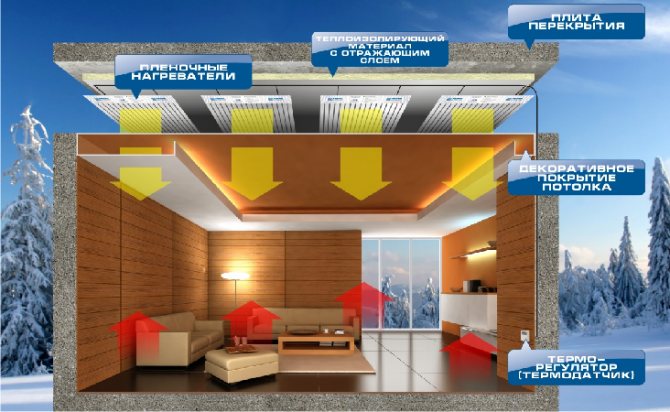

The main requirement for installing Revolts heating panels is the insulation of the concrete ceiling slab, otherwise half of the heat will go into the concrete. In this case, it is not necessary to sew on foam plates, it is enough to nail a layer of OSB plates on the dowels, after which you can put the profile and fix the Revolts heaters with self-tapping screws, like ordinary drywall.
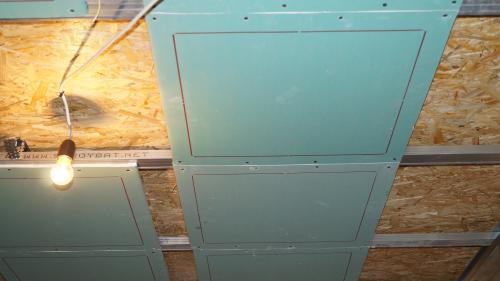

The second option involves the installation of heating panels on the walls of rooms, most often the heaters are mounted at a height of 20-30 cm above the floor level, like conventional convectors or radiators.
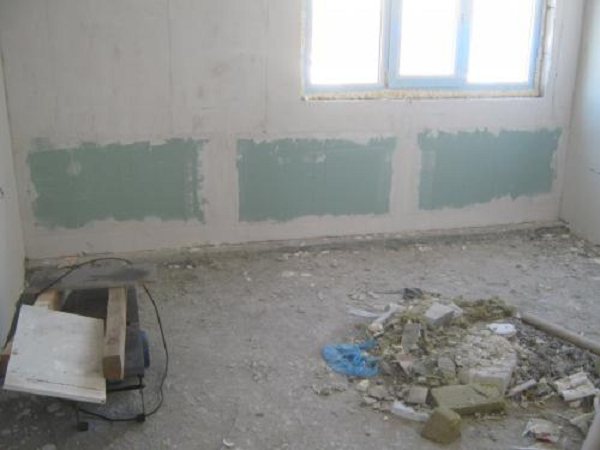

In this case, there is no loss of usable space due to the suspension of radiators of heat convectors, you can get rid of pipes, and you do not need to punch channels for laying separate wiring, as when using any electric heaters. At the same time, there is no need to lay out the entire ceiling or walls with Revolts panels, one square of the useful area of the room will require 0.7 square of the heating surface, or vice versa, 1 m2 of drywall can heat 1.3 m2 of the room.
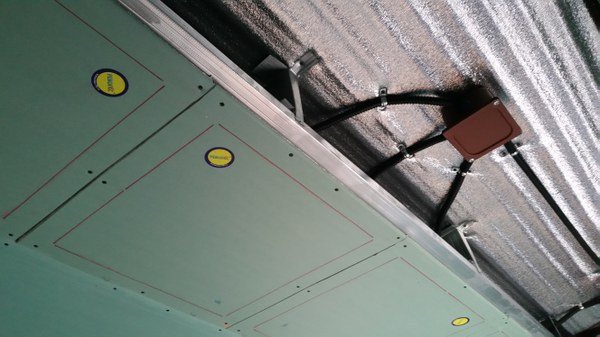

The panels can also be laid in the base of the floor covering in the image and likeness of a warm floor. In this case, the heat transfer coefficient decreases due to an additional layer of laminate or parquet flooring, but in general, the quality of heating increases due to a more rational distribution of heat.
Areas of application of the plasterboard heating system
This type of heating is suitable for houses, offices and other premises in which it is planned to flush the walls with sheets of drywall. It can be both interior partitions and ceilings, laying the base under the tiles.
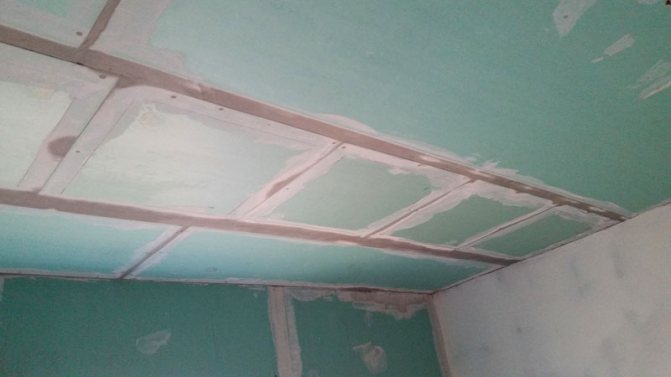

Usually, such IR panels do not mount the entire ceiling, but only its elements, usually central or side ones, achieving the optimal heating temperature
Unlike the already well-known hinged (portable) or static film IR heating elements, this type of warm coating does not require additional strengthening or processing. After purchasing the required number of sheets, you can immediately start repair work, and the installation of plates, by and large, is no different from the installation of conventional drywall, except for the need to connect to a power source, and the coating does not require additional processing (unlike the same film options for infrared heating)
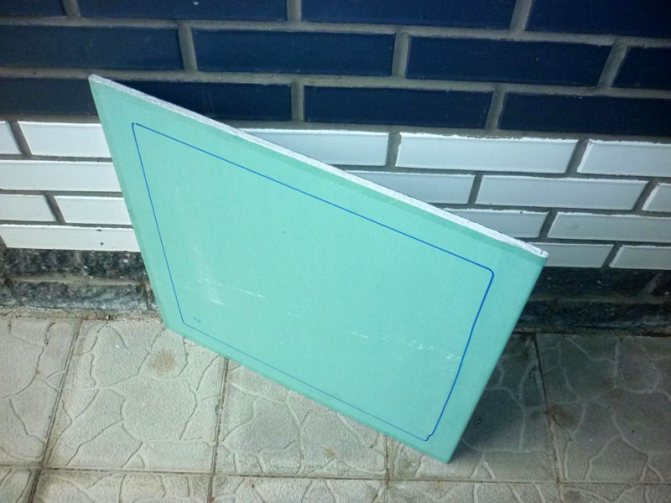

Such panels can be used both in apartments and in offices, medical institutions, kindergartens.
Important! Plasterboard infrared heating can be used as a primary or additional means for heating rooms.
Such panels are widely used in the installation of dressing rooms, saunas and rooms, one way or another subject to periodic freezing, or where a constant temperature regime is important. This can be children's changing rooms or cold dressing rooms, the perimeter of the window frame, or the inner side of the wall, which suffers from constant freezing. Such panels are often used to decorate rooms where livestock are kept. Such a heat source is ideal for summer cottages where it is not possible to carry out centralized heating.
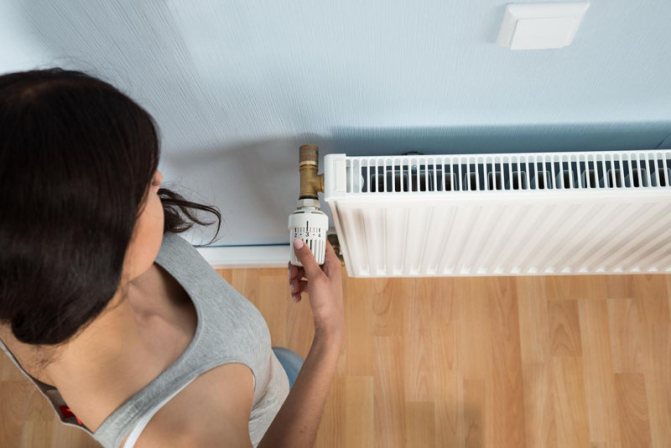

And best of all, you won't need to use mobile heaters. It is important to correctly position the panels so that they can effectively wrap the entire room with heat.
This type of heating is indispensable in the off-season when centralized heating is not available. In this case, it is necessary to calculate its capacity taking into account the existing heating system. Thus, such panels can act both as the main type of heating and in addition to the existing one.
For your information! A similar system is often used to heat greenhouses, since the heat generated during heating in this way is as close as possible to the energy of the sun. Consequently, the growth of plants increases, the ripening of fruits is accelerated even in the cold season due to radiant heat.
In addition, such panels allow you to point-wise "islands" of heat, avoiding unnecessary areas or rooms where a lower temperature must be maintained. Due to this selectivity, there is a significant savings.
Human infrared radiation has been used successfully for a long time. Depending on the type of power source, a distinction is made between electric, gas and diesel heaters. The first type of equipment is most often installed in large enterprises for heating storage rooms or cabins. Diesel fuel is chosen where there is no possibility of connecting to other power sources. Electrical systems are ideal for residential premises - they emit long-wave rays invisible to the human eye and are absolutely safe for health.
What's special about the new heating scheme
The sale of a new heating system is accompanied by a very powerful advertisement. Manufacturers and dealers offering to replace traditional water and electric heaters with Revolts plasterboard heating panels give the following arguments in favor of the new product:
- A fairly simple installation of Revolts heating panels, most of the work can be done by hand, without resorting to the help of narrow-profile specialists;
- The Revolts system can be installed even in damp rooms, since the heating metal-carbon film is covered with a layer of polymer and gypsum;
- Economy heating revolts is twice as efficient as conventional heaters, convectors, radiators, the average power consumption of one panel is 100-300 W / h;
- Thanks to the design features, it is possible to individually regulate the heating and heat transfer of any sections of the walls in the room, thereby creating the opportunity to save on night mode and in the absence of the owners in the house;
- Revolts panels have an almost unlimited service life.
It is clear that no technical system has an unlimited resource, but the manufacturer's specialists believe that a drywall sandwich can withstand a very large number of heating and cooling cycles.
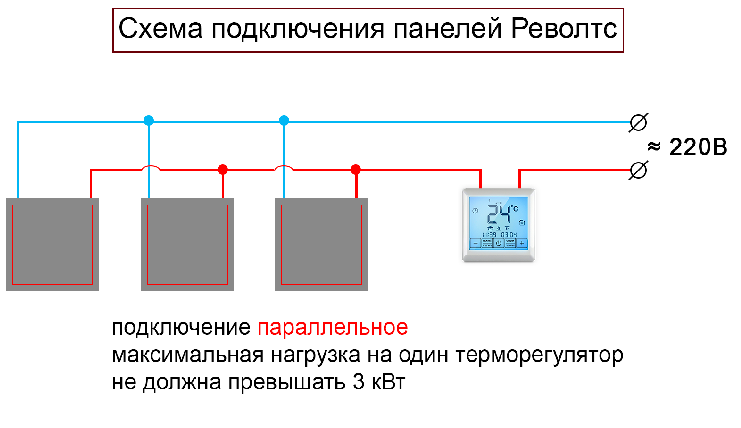

In addition, most of the selling companies believe that Revolts gypsum board heating panels can be used as a finishing material, like regular drywall. After installation, the surface of Revolts panels can be painted, applied with decorative plaster or tiled like a regular wall. Since heating with the help of the new system is used for a rather limited period, it is quite difficult to reliably confirm or deny the resource of heaters, but preliminary conclusions about the advantages and disadvantages can be drawn from reviews of Revolts gypsum plasterboard heating panels over the past couple of years of operation.
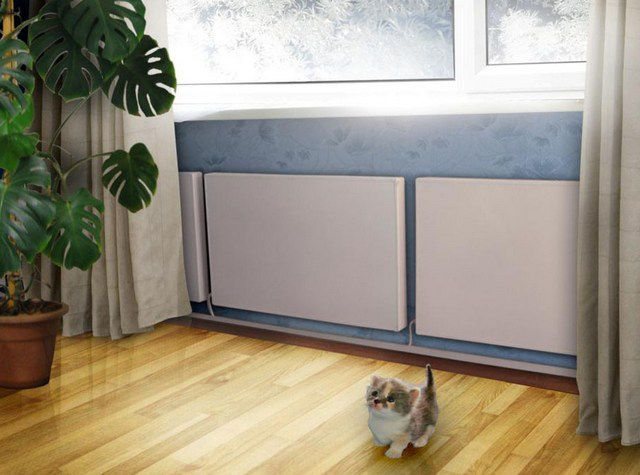

Advantages and Disadvantages of Electric Infrared Heating
To make the final decision on choosing a heating system for your home, you need to carefully study the pros and cons of infrared heating.
Why is new generation heating attractive?
- Infrared heat heats objects and human bodies without wasting electricity to heat the air. The efficiency of radiant heaters is 90%.
- IR devices do not dry the air and do not burn oxygen, which is especially valuable for people suffering from respiratory diseases.
- Radiant systems do not take up much space, they work absolutely silently and without convection, without raising dust during operation.
- Infrared heating of a private house allows you to save a lot on equipment installation and energy bills.To install it, no permits are required (as for connecting gas), and the electricity consumption of such systems is much lower than that of other types of electric heating.
- Long-wave heating devices are absolutely safe for health.
- The absence of a coolant simplifies the operation of the innovative system - there is no need to drain water, rinse radiators and pipes, and worry about leaks.
Disadvantages of radiant heat
The most significant disadvantages can be called the higher cost of electricity in comparison with main gas. If gas has already been supplied to the house, then there is no point in completely changing the system. However, you can use the IR emitters zonal as an additional heat source.
The installation of infrared elements should be planned during the renovation phase. When installing heaters, the location of the furniture and the zoning of the space must be taken into account. This causes a slight inconvenience in cases where no renovation work is planned in the house or rearrangements are often carried out.
The quality of work of heating panels Revolts
New heating technology is just picking up steam, and criticism is already snowballing. Undoubtedly, the idea behind using gypsum plasterboard as a heating surface has its own advantages:
- The heater works like a wall of a wood-burning stove, part of the heat goes away due to convection, part due to radiation, drywall does not burn, is not able to burn or cause a short circuit;
- A plasterboard panel with a heating film interlayer retains most of the sheet's characteristics - a flat surface, low weight and ease of installation;
- Absence of metal in the construction of the heater.
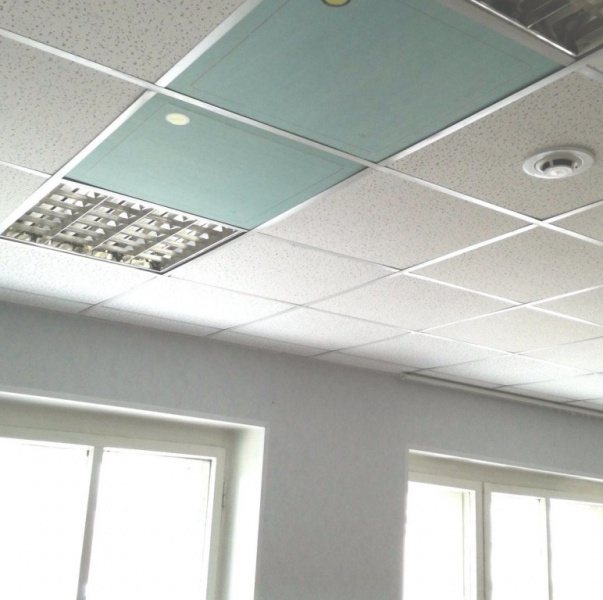

In reality, if you disassemble the Revolts panel, you can see that there is a transparent polymer film inside between two layers of gypsum, which is why the surface temperature never exceeds 80-90 ° C. Manufacturers of Revolts gypsum plasterboard heater attribute this fact to the advantages of heating, since the material does not shield walls and does not create a background, as is the case with electric spiral heaters.
How are CHP heating panels
Outwardly, these panels look like the simplest thin sheet of drywall 60 × 60 cm in size.But this simplicity is only external. Inside the gypsum sheet, there is a film made of a special polymer consisting of a carbon composite.
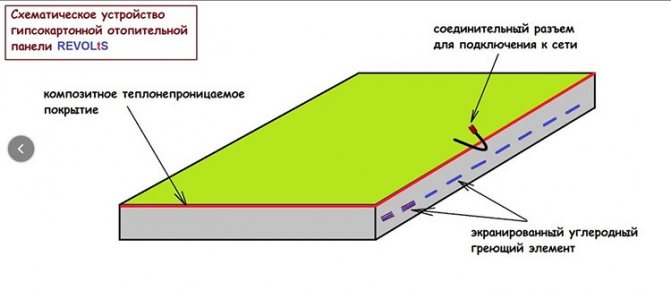

From the rear, the panel is protected by a heat-insulating layer, and is also equipped with a cord for connecting to the power supply
These panels can be safely used for wall and ceiling cladding, they can be combined into one common system. The plates are heated from the inside and emit infrared waves, while consuming 100 Wh to heat 1.5 m² of area. It is difficult to call this technology energy-saving in the literal sense. The carbon polymer film inside HPC batteries does not melt, oxidize or burn. The room temperature can be controlled with a simple device that is mounted separately from the panels on the wall.
Is it worth contacting Revolts heaters, user opinion
The disadvantages, according to reviews, of Revolts plasterboard heating are no less than advantages, so it is important to remember them as well.
As the most significant problems:
- Product price;
- The complexity of the repair;
- Heating too low.
The first and most important complaint about the work of drywall heaters is the high price, a square meter of Revolts will cost 1300-1400 rubles, respectively, to heat one room with an area of 20 m2, at least 14 squares of Revolts will be required, which will amount to almost 19 thousand rubles. This is about twice as expensive as if you equip a room with a pair of conventional 1 kW convectors.
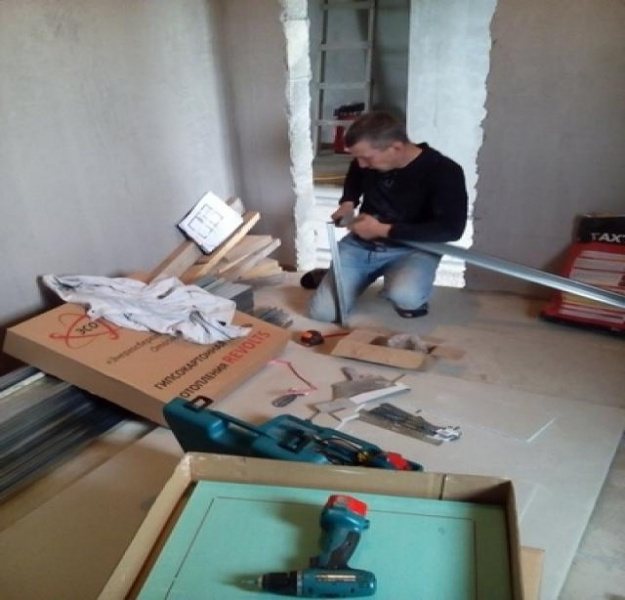

At the same time, gypsum plasterboards require careful attitude and careful installation, if you drop the heater from the ceiling height, then with a high degree of probability it will have to be scrapped, since it is almost impossible to repair the monolith.
In addition, according to reviews, heating Revolts requires a very competent planning. This is the second problem, and perhaps the most difficult one faced by consumers. Revolts heating systems are classified as low temperature systems. This means that 50-55% of the heat is removed from the gypsum surface by convection, and the device itself is more similar to a conventional hot-water radiator or an oil convector.
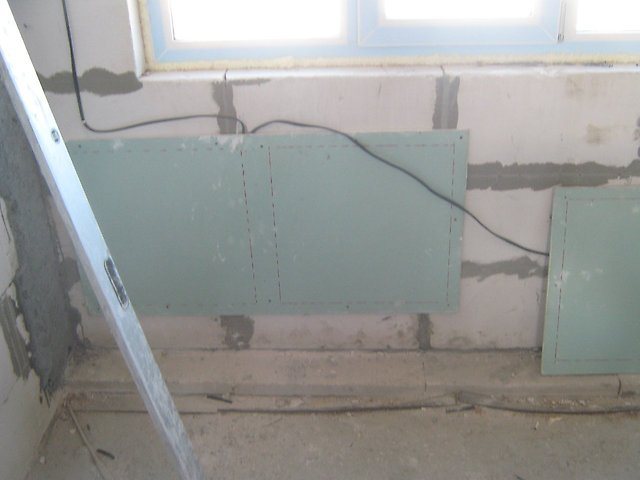

Therefore, despite the presence of a heat-insulating lining, it is still better to install the Revolts panel at a short distance from the walls, and not mount it as a cladding. All stories about the ideal thermal insulation of the back surface are nothing more than advertising, consumers themselves have already realized this, and often the Revolts heating drywall is mounted by hand in the same way as a conventional electric convector.
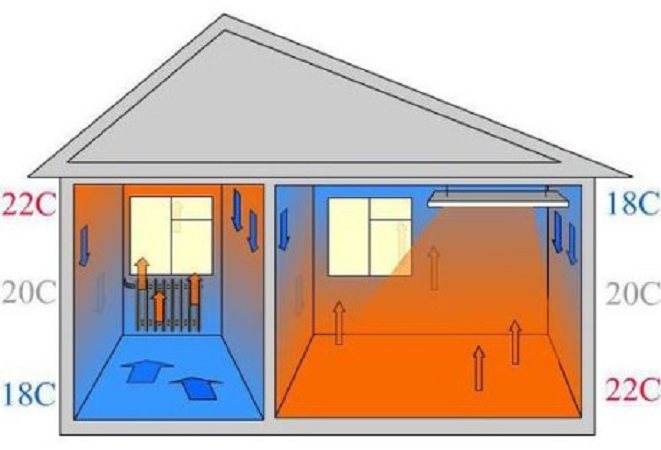

The second half of the energy is transmitted in the form of radiation, but very soft and weak, so plates can be used to sheathe the space around a child's bed or sofa, and not warm the entire space. The maximum heating range of the Revolts panel is 0.6-0.8 m, which is clearly not enough.
What is the principle of a drywall device
At the heart of the work of gypsum plasterboards is the principle of the effect of infrared radiation on the surrounding objects. This radiation is the brother of the sun's rays.
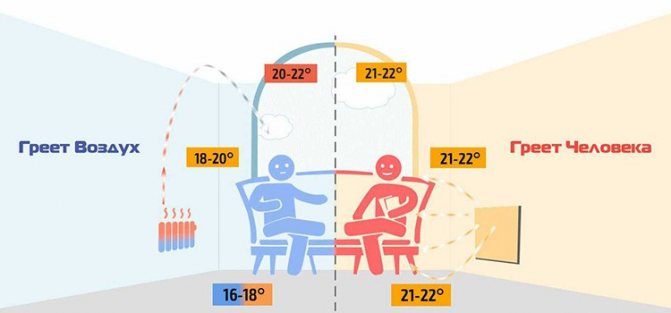

Infrared waves do not heat the air, but objects that are in its path
And already from the objects, in fact, the atmosphere heats up. As a result, we get safe heat and batteries that cannot be burned on. At the same time, the air in the room does not dry out, which is very important.
What is the real situation with Revolts panels
One of the remaining uncertain issues is the reliability and service life of Revolts. Plasterboard manufacturers claim that the heating element is made from a highly resistant and durable composite material. The film is not afraid of acids and alkalis, does not oxidize or burn out. Practical tests show the ability of the heating core of a drywall panel to work continuously for 10-11 years, in theory Revolts should work almost forever.
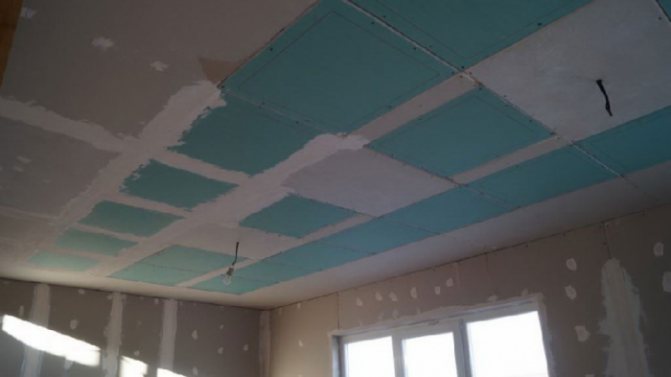

In practice, heating gypsum boards are in more difficult conditions. First, the heating-cooling cycle invariably leads to the development of a large number of microcracks, both in the gypsum itself and in the film material. Even metal has the ability to get tired, especially since the Revolts film heater will crack quickly enough if the installation recommendations are not followed.
Secondly, despite the assurances of the manufacturer, Revolts drywall panels should not be covered with any decorative materials - paint, apply plaster, and even more tiled. This always leads to the "conservation" of heat and destruction of gypsum, as a building material, under the influence of water vapor. A tile-covered plasterboard heating panel will transfer heat to concrete and plaster.
In addition, the panels cannot be cut at their own discretion, as could be done with plasterboard sheets, so the number of heaters must be carefully weighed against the size and geometry of the room.
How effective are drywall heaters
The experience of using CHP panels shows that they are able to work effectively for 10 years continuously. So this device has a huge resource.As for the efficiency of work, it should be noted that with such devices the room heats up very quickly, but just as quickly and cools down after turning it off. On average, a full heating of a small room of 15 m² will require 1 kWh.


Layout of Revolts panels
Tips for prospective drywall buyers
Practice shows that the most suitable place for installing Revolts gypsum plasterboard heaters is the ceiling and the midline of the walls. In rooms where most of the time is spent in a sitting position, Revolts heating panels are installed on the walls of the room so that the distance from the sofa, armchairs or bed does not exceed 80 cm.
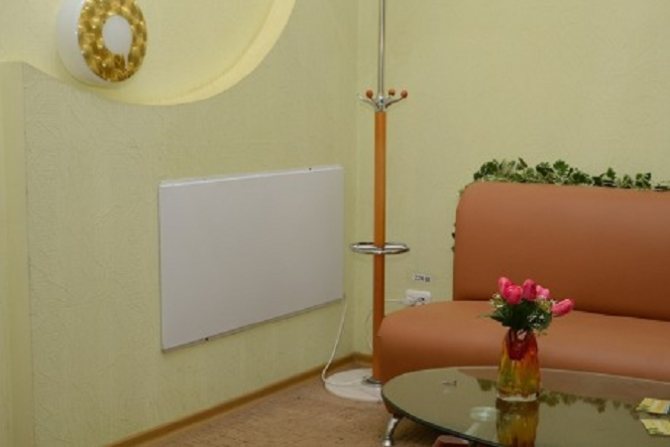

In the kitchen, in the corridor, even in the bathroom, plasterboard heaters are placed on the ceiling. If the room is large or very high ceilings, then there will be little use from drywall panels; at best, you can make a comfort zone on a small patch near the computer, at the table or near the TV. In such a situation, Revolts panels are significantly inferior to underfloor heating, both in terms of efficiency and heating economy.
The maximum efficiency of Revolts gypsum plasterboard heaters is achieved in rooms with a maximum width of 2.5 m. For narrower rooms, most of the heat will simply go to the ceiling and be lost; for wider spaces, the effectiveness of Revolts gypsum panels will clearly not be enough, in the center a zone with a low air temperature will necessarily form.
Basics of installing plasterboard heaters
To simplify installation, manufacturers apply special markings to the panels of plasterboard heaters. It shows the attachment points. The rest of the process is the same as with regular CHP sheets. Installation can be open or hidden.
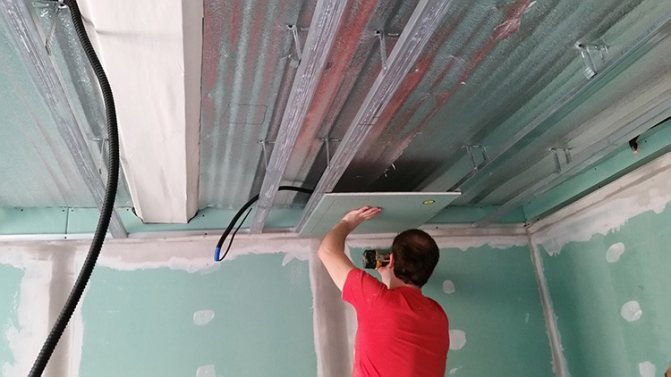

With the open version, the connection cords are tucked into the cable channel, with the hidden version, they are hidden behind the crate
For additional thermal insulation on the reverse side of the panel, place "Isover" or other similar insulating material.
Thermal power
An important indicator of the operation of an IR heating system is the temperature, on which the standard power consumption depends. The standard heat level is considered to be t 19 to 20 ℃. Before installing the heating system, it is necessary to determine the parameters and layout of the premises, the type of material for the floor, insulation. This will help you to choose an infrared heater for the room according to the current strength, to correctly determine the energy consumption.
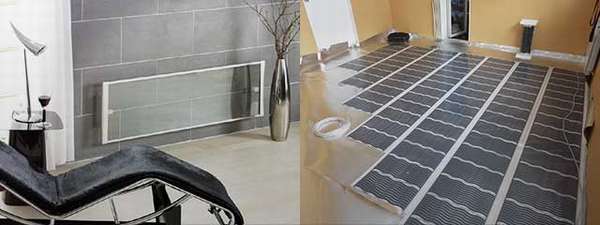

If the area of the room is less than 19 m², then it is better to use an infrared radiator. For large rooms, it is more cost-effective to install electric film heating. Each heating system has a certain amount of energy load for heating surfaces. The normative indicators are as follows:
- the level of warmth of the floor surface with daily presence of people should be 25 ° C,
- for rooms with intermittent residence, the indicator increases to 30 ° C,
- heating of elements of infrared equipment for residential premises should not exceed 55 ° C,
- temperature differences in certain areas of the surface are allowed from 5 to 10 ° C,
- according to the international standard, the surface heat should be 19 - 29 ° C.
It is recommended to select electrical panels according to the principle: 1.2 kW per 10 sq. It is important to know that patented infrared heaters of well-known brands, which have been tested in practice, are characterized by a heat loss of less than 10%. This is a very high performance indicator.
Advantages versus disadvantages
The most rational modern heating is radiant film electric heaters. The infrared thermal element is the thinnest two-layer polymer film with carbon filaments, which has increased flexibility and low weight. Infrared film heating is usually installed on the entire surface of the ceiling, floor, walls.The main advantages of the heating element are:
- high energy efficiency and ease of use. Plains, without burning oxygen, without overdrying the air in the house, retain moisture well, warm the room throughout the entire volume,
- increased resistance to mechanical and physical damage, no fire. The film temperature allows the device to be mounted near various interior objects,
- environmental friendliness, safety. The rays of the heater have a beneficial effect on the human body, like the heat rays of the sun. The heater, due to working actions at low temperatures, does not burn, does not cause a fire,
- aesthetics. The device brings brightness, style, good mood, comfort to the room, performs a decorative function in the interior,
- service life up to 50 years.
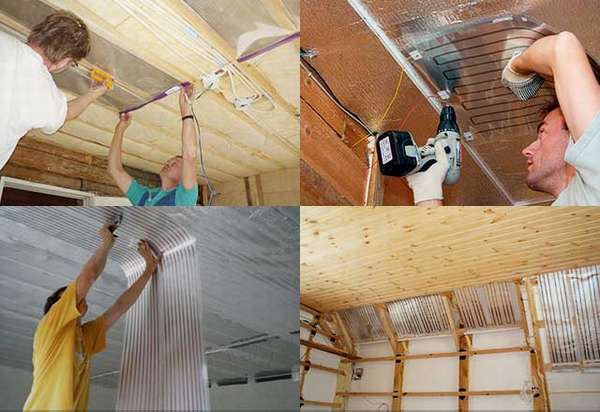

The system is connected to a regular 220V outlet, it quickly heats up the air and hard surfaces of objects, which consistently redirect the heat into the room. The device drives do not allow the system to cool down for 2 hours.
The film based on carbon tubes is widely used for heating the base of the room. Heating is installed under laminate, parquet, linoleum, carpet. Infrared floors consume between 30 and 70 watts per 1 m².
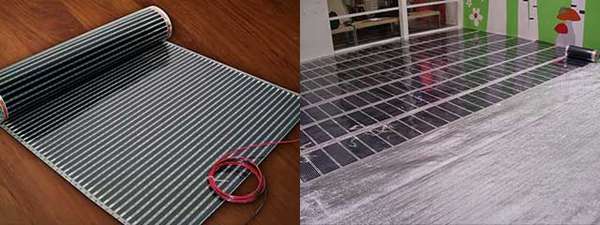

The disadvantages include the relatively high cost of the IR system. In addition, if there is a desire to change conventional radiators for infrared panels or films, then you will have to make serious repairs. The cost of electricity cannot be said unequivocally. In some regions, electricity is even cheaper than gas. In any case, you can combine systems.

